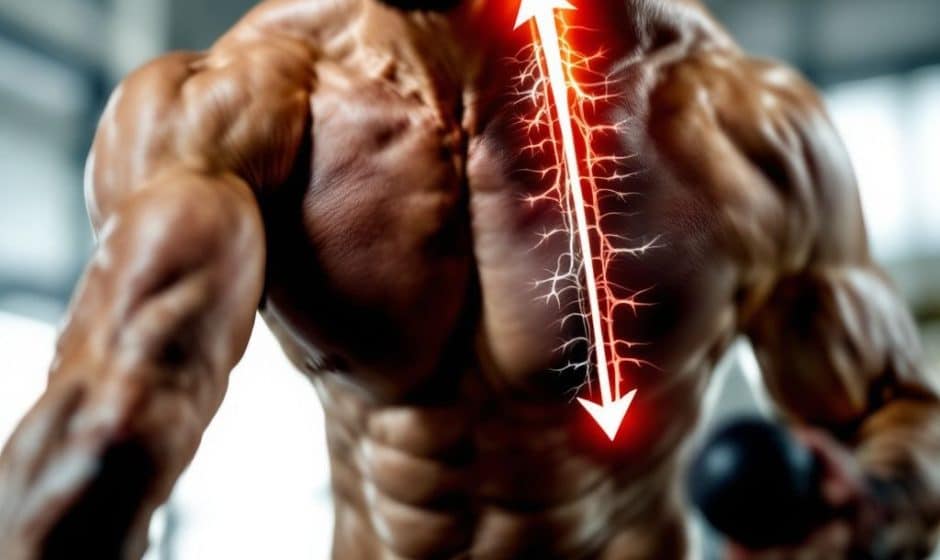Hey there! Ever wake up one morning, ready to tackle your workout, yoga session, or simply a walk through the park, only to be halted by an aggravating ache in your tendon or the notorious joint creakiness? It’s a real mood killer, isn’t it? Let’s talk about those mighty tendons—a crucial yet sometimes overlooked piece in our mobility puzzle. We rely on them more than we’d think!
I get it. Tendon health might not be your go-to topic during coffee break chats, but stick with me here. The importance of tendons stretches beyond the occasional discomfort or post-exercise soreness. They’re the tissue superheroes that keep us moving smoothly. And believe me, understanding how to keep them strong and healthy is a game-changer. So, let’s dive into the juicy details of maintaining your tendon health, focusing on everything from hormone regulation to boosting your tendon strength.
Understanding Tendons: The Connective Tissue Focus
Let’s start with the basics. Tendons are those resilient cords in our body that connect muscles to bones. Picture them as the sturdy ropes binding our skeletal riggings. They’ve got one big job: literal tug of war with muscles and bones so you can move, stretch, and lift. When something goes off with our tendons, everything feels off. Trust me, it’s a domino effect.
Now, what’s cool about tendons is their flexibility and strength. While they may seem small or mundane, underneath that exterior is a marvel of biological engineering. The key player here? Collagen. This protein acts like the primary building block, granting tendons their enduring strength and elasticity.
What’s the Deal with Tendon Health?
Glad you asked! Here’s the scoop: keeping tendons healthy isn’t just about solving pain after it starts. It’s also about prevention and maintaining that glorious, unrestricted movement lifelong. We all like feeling youthful and agile, right? Investing a bit of time could save you a world of discomfort down the road.
A common thread through many tendon-related issues is inflammation. Trust me, once inflammation sets in, things get complicated. That’s where hormone regulation enters the scene. Balanced hormones—not just leading to mood stability—play a key role in regulating inflammation in the body.
Navigating Hormone Regulation for Optimal Tendon Health

How Hormone Regulation Affects Your Tendons
Hormones? Isn’t that for teenagers dealing with perpetual mood swings and acne? Sure, that’s one piece of the puzzle, but there’s so much more to it. Hormones like estrogen and testosterone actually impact collagen synthesis, affecting tendon strength and repair.
Estrogen, often starring in discussions about bone density, plays a similarly crucial role by influencing collagen synthesis. This means, especially in post-menopausal individuals, changes in hormone levels might mean changes in how strong and versatile those tendons remain over time.
Testosterone? Not just the testosterone stereotype for boosting gym gains. It’s significant for both men and women in promoting tendon health by supporting muscle growth that indirectly supports and shields tendons from overuse injury.
Balancing Your Hormones Naturally
Alright, picture your body’s hormone regulation like a symphony. When it’s out of tune, the whole piece lacks harmony. Bringing balance—this is where things get actionable.
- Eating for Hormonal Balance: Think of your diet as the toolbox for hormone health. Omega-3 fats and antioxidant-rich fruits and veggies are your pals here. They combat inflammation and aid hormone production.
- Sleep—Seriously, Sleep: Yep, the age-old advice holds true. Quality sleep is not just a cosmetic luxury; it boasts major hormone regulation perks. Sleep right, wake up to healthy hormone levels.
– **Goal**: Aim for 7-9 hours per night to help stabilize cortisol (the stress hormone) and maintain a healing environment for tendons.
- Strength and Cardiovascular Exercise: A bit counterintuitive—a strained tendon needs rest, right? But encouraging overall fitness helps in—surprise, surprise—hormone regulation. When exercising, consult a doc first if you’re dealing with current tendon pain, though.
- Manage Stress Levels: I hate to break it to you, but stress throws off hormone regulation. Consider yoga, meditation, therapy – whatever fits – to keep cortisol in check.
Building Stronger Tendons: The Practical Guide

Once your hormone regulation dances in harmony, let’s turn our attention to proactive steps to actually work on tendon strength. Here’s where you’ll find tips and practical pursuits to incorporate into your lifestyle.
Nutrition – Fueling Your Tendons
Ever heard the saying, “You are what you eat”? It’s cliché, but right on the money when it comes to tendons.
- Lean Proteins and Vitamin C: Proteins provide essential amino acids for repairing tendon issues. Vitamin C? It helps with collagen synthesis essential for tendon strength. Think chicken breast alongside a fresh orange.
- Gelatin and Collagen Supplements: A bit less mainstream, but consuming gelatin has been studied for tendon health benefits by supporting collagen production. Add a scoop of hydrolyzed collagen into your morning smoothie. Delightful and effective!
Exercise and Mobility: The Active Approach
Practicing dedicated movements and exercises targets both protective and developmental aspects of tendon health, especially for athletes or enthusiasm-minded folks at large.
- Eccentric Muscle Loading: Bit technical? Let me break it down. It’s essentially slow lowering and contracting exercises. Think calf raises or lowering from a pull-up. This approach stimulates tendon repair and growth remarkably well.
- Stretching and Mobility Work: Martial arts level splits? Not necessary, but dynamic stretching preps tendons for activity, whereas static stretching assists with recovery.
- Foam Rolling and Myofascial Release: Easy one to do at home, too. Rolling helps release tensions and improve blood flow, aiding both muscle and tendon repair.
Recovery Practices: TLC for Yourself

Taking care of yourself post-exertion keeps tendons banging on all cylinders without overstepping into pain territory. Research shows structured rest, not complete stoppage, equals better healing.
- Cold and Heat Therapy: Toss a couple of ice packs in the mix for swelling, then alternate with heat pads to increase blood flow to tendons in focus. It feels nice, too!
- Compression and Elevation: Old-school remedies still work, buddies. Wrapping a sore joint compressively ensures it stays snug and reduces excess inflammation.
Knowing When to Seek Professional Help
Here’s the grown-up realization about bodily pain: sometimes you’re just not gonna hack it alone. If scheduling adjustments, rest, and home treatments don’t relieve painful tendons, it might be time to book a pro’s appraisal.
Physiotherapists, orthopedic doctors, or registered dietitians can offer valuable insights and targeted therapy, whether it be strengthening, surgery, or guided nutrition protocols.
Final Thoughts: Commitment Over Perfection
Here’s a nugget to keep in your pocket: remember that looking after tendon health isn’t about perpetual perfection. It’s like enduring the weather’s ups and downs or following your favorite sports team through victories and losses. Small, conscientious efforts make a difference.
Start small. Pick a couple of lifestyle changes mentioned here and run with them. Adapt to what feels right. Over time, the small shifts turn into dependable habits; slow progress blossoms into stronger, more dependable tendons. With these actionable nuggets in your pocket, you’re poised to enjoy more days of pain-free movement, filled with energy and life.
Trust me on this one; you’ll thank your healthier, happier tendons later. Go ahead, treat them well, and groan less tomorrow. Cheers to good health and even smoother motion!
Frequently Asked Questions
What is hormone regulation, and how does it affect the body?
Hormone regulation involves the balance and functioning of hormones in the body, which are chemical messengers influencing every cell and organ. During life stages like puberty, pregnancy, perimenopause, and menopause, hormone levels can fluctuate significantly, affecting various bodily functions such as sleep, energy, mood, and skin health[3][5].
How does Hormone Replacement Therapy (HRT) work in hormone regulation?
Hormone Replacement Therapy (HRT) works by topping up or replacing missing hormones, typically oestradiol, progesterone, and sometimes testosterone. HRT is prescribed to improve symptoms and future health, and it can be administered through various formats such as patches, gels, sprays, or pills, often individualized to the patient’s needs[1][5].
What are the common signs and symptoms of a hormonal imbalance?
Signs and symptoms of a hormonal imbalance can include irritability and fatigue, mood swings and depression, skin dryness and loss of elasticity, water retention and weight gain, osteoporosis and joint pain, less interest in sex, insomnia, and other sleep disorders, as well as memory issues and difficulty concentrating[3].
What are the potential side effects and risks associated with HRT?
The common side effects of HRT include bleeding, breast tenderness, bloating, and mood changes. More serious risks can include an increased risk of breast cancer, stroke, and blood clots, especially with prolonged use beyond five years. It is crucial to weigh these risks against the benefits under the guidance of a healthcare professional[1][5].
References



